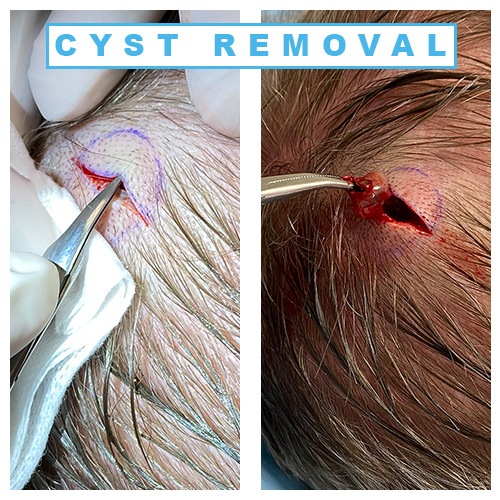Removing a stubborn sac or cyst—especially something like a sebaceous cyst or epidermoid cyst—should be done carefully and often professionally to avoid infection, recurrence, or scarring. Here’s an overview of how cyst removal is usually approached, particularly when it’s stubborn or recurrent:
🔍 1. Confirm It’s a Cyst (Not Something Else)
Make sure it’s not:
-
An abscess (infected pus pocket)
-
A lipoma (fatty tumor)
-
An inflamed lymph node
-
A boil or acne nodule
Signs it’s a cyst: soft or firm bump, slow-growing, may move under the skin, can have a central pore, may drain keratin or thick fluid.
⚕️ 2. When to See a Professional
If it’s:
-
Painful or infected
-
Recurrent (comes back after popping)
-
Large or growing
-
In a sensitive or visible area
-
Leaking or foul-smelling
👉 Don’t try to remove it at home if any of the above are true. A dermatologist or minor surgery clinic can remove the entire sac, which is key to preventing recurrence.
🏥 3. Professional Removal Steps
Here’s how a dermatologist usually removes a stubborn cyst:
-
Numbing the Area – Local anesthetic is used.
-
Incision – A small cut is made over the cyst.
-
Drainage (if needed) – If infected, fluid or pus may be drained first.
-
Cyst Wall (Sac) Removal – The sac or capsule must be removed intact; otherwise, it can regrow.
-
Stitches or Closure – The wound may be stitched or left open to heal depending on the situation.
-
Antibiotics – Only if infected.
⚠️ 4. Why DIY Removal Is Risky
Removing a cyst at home, especially a stubborn one, can lead to:
-
Incomplete removal (recurrence)
-
Infection
-
Scarring
-
Bleeding
-
Spread of infection to deeper tissues
✅ Summary
For stubborn cysts, complete removal of the sac by a healthcare professional is the most effective solution. Home remedies or popping usually just relieve temporary pressure and don’t remove the source.



